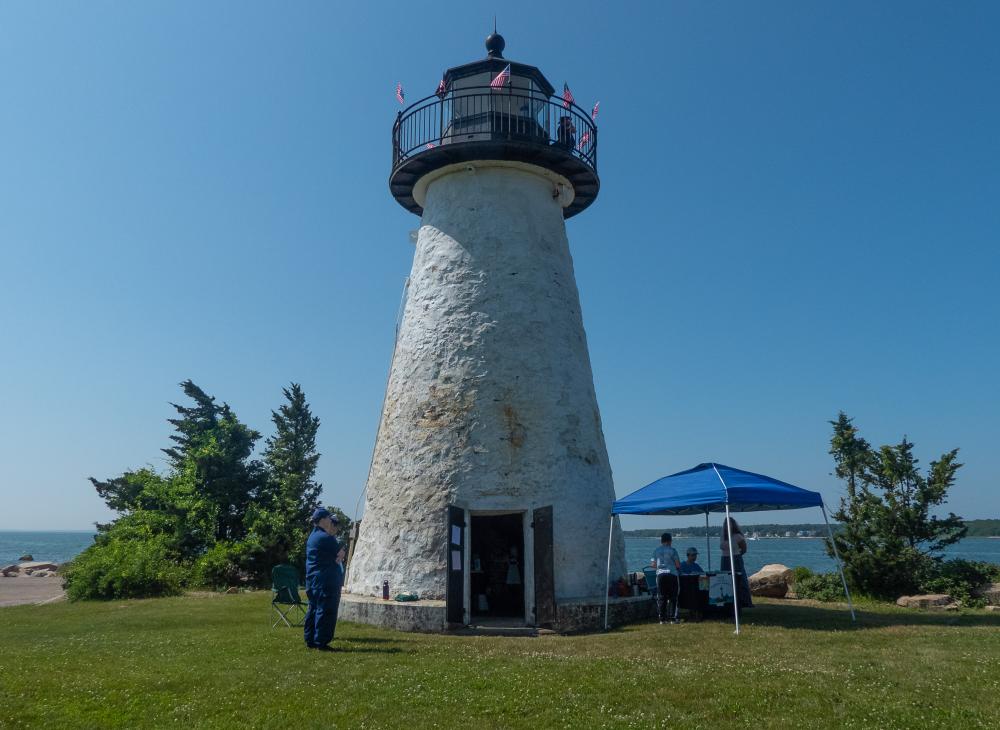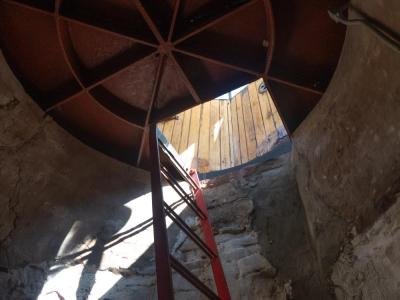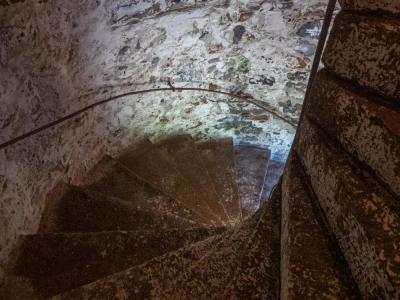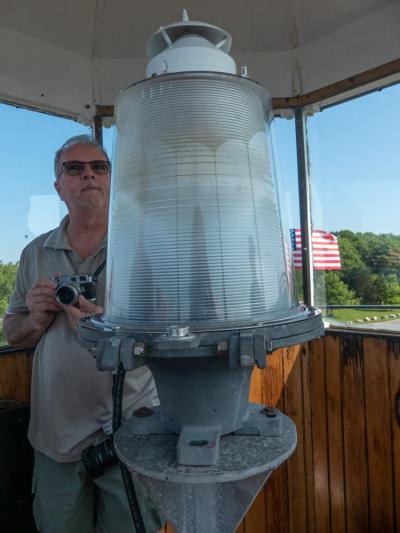Light shines on Ned’s Point Lighthouse
MATTAPOISETT — Three seconds on. Three seconds off. And repeat. For the past 188 years, Ned’s Point Lighthouse has done exactly that, and it’s not showing any signs of stopping.
This six-second pattern is unique to Ned’s Point Lighthouse, guiding sailors to Mattapoisett from 16 miles away.
“We’re sort of like the last line of defense, because if the electricity goes out, satellites go out, this guy still runs,” said Sal Giglia, USCG Flotilla Staff Officer 6-3.
Standing at nearly 40 feet tall, the lighthouse is a Mattapoisett landmark, overlooking Buzzards Bay and the Elizabeth Islands since 1838.
Construction of Ned’s Point Lighthouse began in 1837 after Congressman John Quincy Adams recommended that a lighthouse be built in Mattapoisett.
Congress appropriated $5,000 to the project, but it wasn’t enough and when construction workers said another $5,000 was needed, they were told to get rocks from the beach to finish the project, according to Giglia.
He said that if you stand in front of the lighthouse you would be able to see that it leans slightly to one side due to this lack of materials and funds.
According to Giglia, the lighthouse was a “feat of engineering” based on the topography of the area and what was needed for ships to see the beam of light.
The lamp is visible from 16 miles away because it was built for that trajectory and the intensity at which the light shines, he explained.
When the lighthouse began operating in 1838, whale oil was used to heat the 13 lamps that made up the lighthouse’s beam.
Giglia explained that the oil was stored in a shed on the other side of the field and heated in a room downstairs.
During storms, the lighthouse keeper would stay in the lighthouse at all times while his wife heated gallons of oil and lugged it to the lighthouse to keep the lamps lit.
Giglia said the keeper was paid just $17 a month but lived in the keeper’s house for free.
The lighthouse now operates with a fresnel lens that distributes the light evenly and its six-second pattern is automated.
A lighthouse keeper is no longer needed to keep the lighthouse lit and oil is no longer stored in a shed, but still the lighthouse is used to guide sailors through Buzzards Bay and is operated by the oldest U.S. Coast Guard Auxiliary Flotilla in the country.
The keeper’s house is gone, having been moved in 1923 to Wing’s Neck, Pocasset, and the shed where oil was stored is no longer used, but the lighthouse is now open to the public for tours, which are free.
For those looking to visit the lighthouse, there are some guidelines to follow, including that children should be at least 48-inches tall to climb the stairs and ladder, visitors must wear closed-toed shoes, children under 14-years-old can’t ascend the stairs without an adult accompanying them and children under 10-years-old can’t go out on the catwalk.
Giglia also recommends researching the lighthouse and area and reading about it to know what to expect when they arrive for a tour.
“It’s to their advantage because then they’ll be able to visualize what they read,” he said.
The lighthouse is open for tours twice a month through September, with the next tour set for Saturday, July 12 from 8 a.m. to 12 p.m.

















